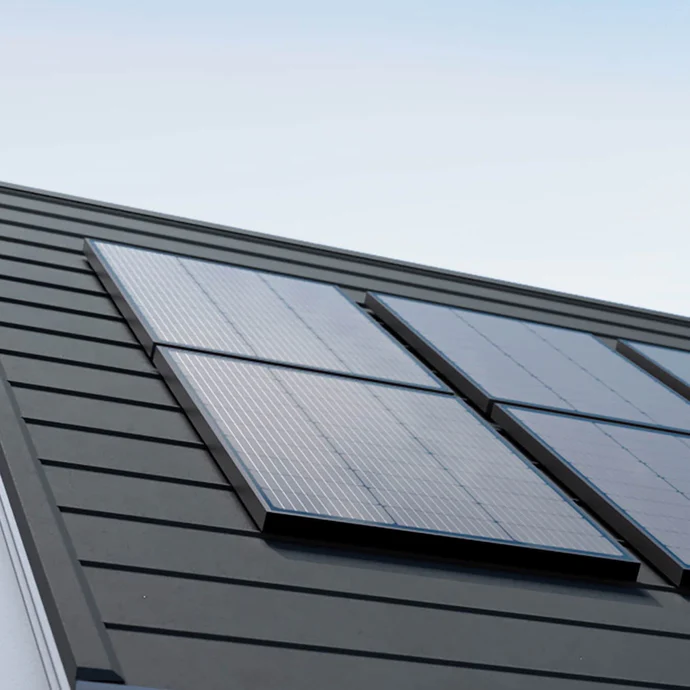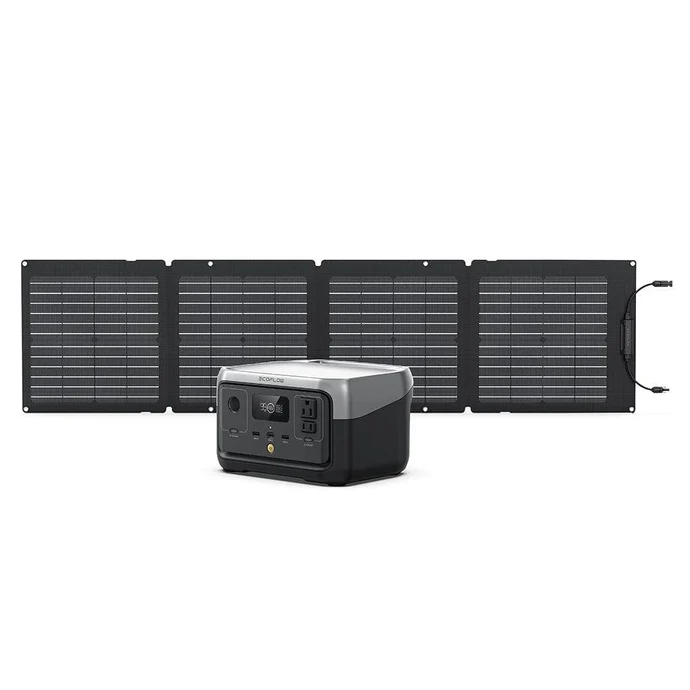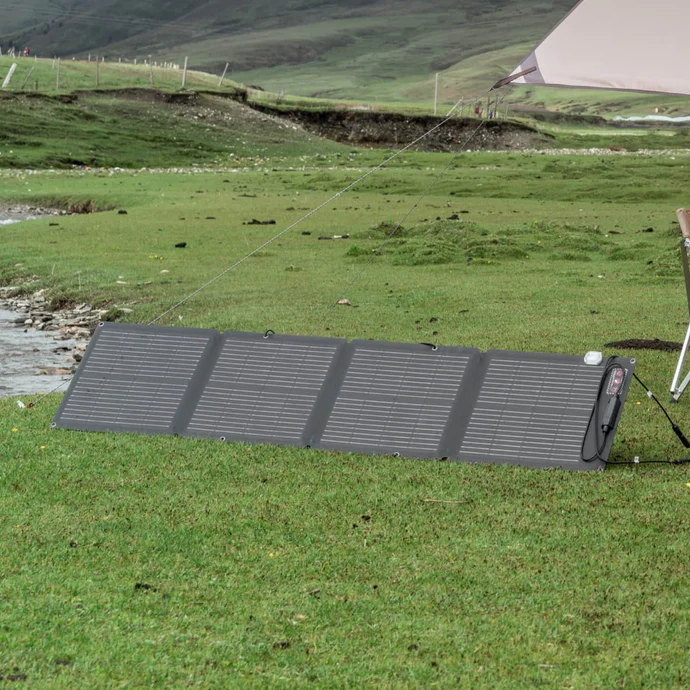Solar Photovoltaic System Cost Benchmarks
Solar energy has grown in popularity, becoming a key player in the renewable energy movement. However, one of the biggest concerns for homeowners and businesses alike is the cost of installing solar photovoltaic (PV) systems. The price can vary greatly based on several factors.
This article provides a clear breakdown of the key elements that influence the cost of solar PV systems, giving you a better understanding of what to expect when considering solar energy.
What is a Solar Photovoltaic System?
Before we talk about the cost, we must first know how the system works and what the solar photovoltaic system is. Photovoltaic systems are merely systems converting the sun’s radiation into usable electric energy, with the following main constituents that determine the system’s cost and efficiency.
Solar Panels
They are the central units, which convert the sun’s rays into direct current (DC) electricity. Whether monocrystalline, polycrystalline, or thin-film is the kind of solar panel utilized, the system’s cost and degree of efficiency might vary.
Inverter
This component converts the DC electricity from the solar panels into alternating current (AC), which is the form of electricity used in most homes and businesses.
Mounting System
This includes the brackets and supports that secure the solar panels to your roof or ground-based system.
Electrical Components
These are the wiring, connectors, and possibly an energy storage system (like a battery) that help store excess power generated during the day for use at night or during cloudy periods.
Each of these components plays a role in determining the overall cost of a solar system. Understanding these parts will help when evaluating the price.
3 Factors That Affect Solar Photovoltaic System Costs
System cost is dictated by a multitude of variables that vary significantly and significantly affect the total sum. With variation within the system size and location, each variable introduces an aspect of complication within the cost structure.
System Size
- Residential vs. Commercial: A typical residential solar system ranges from 3 kW to 10 kW, while commercial systems can be much larger. The energy needs of the property will dictate the system size.
- Energy Demand: Higher energy consumption, such as in larger homes or businesses, requires a more powerful system, thus increasing the overall cost.
Location and Installation
Local Regulations: Depending on where you live, you may need special permits or certifications to install solar panels. Some cities or states have more stringent requirements, which can increase costs.
Installation Costs: Even for the same size system, the total solar panel installation cost varies a lot from one state to another. In states with high power rates (like California or Hawaii), solar saves more money over time—so bigger systems are often used. Some states offer rebates, property tax exemptions, or solar renewable energy credits. Installation costs more in states with higher wages or stricter building codes.
Roof Type and Condition: The type of roof (flat, sloped, or metal) can affect installation difficulty. If your roof needs repairs before installation, these additional costs should also be factored in.


Technology Used
Solar Panel Efficiency: Higher efficiency panels convert more sunlight into electricity, making them more expensive. For example, monocrystalline panels tend to be more efficient but also come at a higher cost.
Inverter Quality: A good quality inverter ensures the efficient conversion of electricity and can extend the life of the system. This may lead to a slightly higher upfront cost, but more savings in the long run.
Battery Storage: If you opt for energy storage, adding batteries will increase the overall cost of your system. However, it also ensures you have energy when the sun isn’t shining, which is essential for energy independence.
Average Cost Benchmarks for Solar PV Systems
Now that we understand the key factors that influence the cost, let’s break down the average costs for solar PV systems, both residential and commercial.
Residential Solar Systems
Cost per Watt: According to the residential PV NREL, the average cost-per-watt for residential solar systems in the U.S. is around $2.68/WDC before incentives in 2023. For a 6 kW system, the average total cost is approximately $16,080 before incentives.
Commercial Solar Systems
Cost per Watt: According to the commercial PV NREL, the cost per watt for commercial solar systems is typically lower due to economies of scale. In 2022 and 2023, the cost per watt for commercial photovoltaic systems was $1.99/WDC and $1.78/WDC, respectively. Therefore, a 100 kW system for a commercial property could cost between $178,000 and $199,000, excluding incentives.
Payback Period and Return on Investment
Government Incentives: Solar energy tax credits, such as the federal Residential Clean Energy Credit, can reduce upfront costs by as much as 30% for systems installed from 2022 through 2032. This credit percentage phases down to 26% for systems placed in service in 2033 and 22% for those placed in service in 2034. State and local incentives may further reduce costs.
Payback Period: Most residential systems have a payback period of 6 to 10 years. After this period, the system begins to generate savings on your energy bill.
Return on Investment: Over 25 years, a solar system could offer an ROI of 10% or more, meaning the savings far outweigh the initial investment.


Solar System Cost Trends and Market Analysis
As solar technology continues to evolve, the cost of solar PV systems has been steadily declining. This trend is expected to continue due to advancements in technology, greater market demand, and an overall push towards more sustainable energy solutions.
Technology Advancements
Panel Efficiency Improvements: Solar panels have become more efficient over the years, with the average panel efficiency now exceeding 20%. This is so because, for an equal system size, more energy is generated for a greater rate of return for investments. A good example of this innovation is the EcoFlow NextGen 220W Bifacial Portable Solar Panel. This panel is made with a two-in-one bifacial design, which allows it to generate as much as 25% more energy, making it an extremely efficient product. With a conversion rate as much as 25%, this portable solar panel is efficient in optimizing energy production. In order to achieve maximum energy capture, it is further equipped with a 30-60° tiltable angle bracket and an in-built solar angle guide.
Storage and Inverter Innovations: Advancements in inverter and storage technology are making it easier and more cost-effective to use solar energy, even when the sun isn't shining. These developments are likely to reduce the total cost of solar installations in the near future.
Market Demand and Global Trends
- Increasing Demand for Solar: As more homeowners and businesses opt for renewable energy, the increased demand for solar technology will likely result in even lower prices due to economies of scale.
- Supply Chain Considerations: Global supply chain issues, such as raw material shortages, can still have an impact on solar panel prices, but overall, solar costs are expected to continue dropping.


How to Estimate the Cost of Your Solar System
Calculating the cost of a solar system doesn’t have to be complicated. The first step is understanding your household or business energy needs and selecting the right system and equipment based on those needs. Here’s a simplified guide to help you estimate your solar system costs.
Assess Your Energy Usage
● Understand Your Needs
Start by checking your electricity bills for the past 12 months to understand your monthly energy consumption (usually measured in kilowatt-hours). For example, an average household typically consumes between 500 and 1,000 kWh per month, while a business might use more. This will help you estimate the required size of your solar system.
● Calculate the Size of Your Solar System
Based on your monthly energy consumption, you can estimate the required system capacity. Generally, you can determine how many solar panels are needed based on your electricity usage per kilowatt-hour. The larger the system, the more electricity it can generate.
Choose a System That Suits You
● Customizing the System
The size of your roof, its orientation, and how much sunlight it receives will affect the type of system you choose. If your roof is small or poorly angled, you may need to opt for more efficient monocrystalline panels. Ensure that the system is tailored to both your roof space and energy needs.
● Inverters and Battery Storage
Select an efficient inverter to ensure high conversion of electricity. While battery storage systems add to the initial cost, they allow you to use power when there is no sunlight. Get Multiple Quotes
● Compare Prices
Obtain quotes from at least three installers, making sure the quotes include all fees (such as installation, materials, permits, etc.). Different installers may have varying pricing structures, so it’s essential to compare the services and prices from each. Consider Subsidies and Tax Incentives
Many regions offer tax incentives or subsidies for solar installations, which can significantly reduce upfront costs. Be sure to ask the installer if such incentives are available and ensure they are included in the quote.


Future of Solar Photovoltaic Systems
The future of solar photovoltaic systems looks promising, with declining costs, increasing efficiency, and greater accessibility. With the right research and investment, solar energy can be an affordable and sustainable solution for both homeowners and businesses. By considering all the factors that influence cost and utilizing available incentives, you can make a smart investment in a brighter, cleaner future.
FAQs about Solar Photovoltaic System
Q1: How long does a solar PV system last?
Solar PV systems typically last between 25 and 30 years. Most solar panels come with a 25-year warranty, but they may continue to generate electricity even after that. Their efficiency can decrease slightly over time, but with regular cleaning and inspections, they can continue performing well throughout their lifetime.
Q2: What is the best time of year to install solar panels?
Spring and summer are great times to install solar panels. The days are longer, so you get more sunlight from the start. That means your system can begin producing energy right away. The warmer weather also helps. Installers can work faster without dealing with cold or snow, which often slows things down in winter.
Q3: Are there any maintenance costs for solar systems?
Solar systems don’t need much maintenance. Just clean the panels once or twice a year to get rid of dust or leaves. That helps them work better. You can do it yourself, or hire someone if you prefer. A quick check by a professional now and then is also a good idea. The cost is usually low, and it helps keep everything running smoothly.